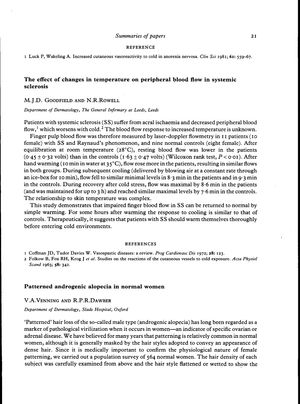Patterned Androgenic Alopecia in Normal Women
June 1987
in “
British Journal of Dermatology
”

TLDR Patterned hair loss is relatively common in women and not usually a sign of serious health issues.
In the 1987 study by V.A. Venning and R.P.R. Dawber, a population survey of 564 normal women was conducted to examine the prevalence of patterned androgenic alopecia, commonly known as male-pattern hair loss, in women. The researchers found that 13% of premenopausal and 37% of postmenopausal women exhibited detectable levels of hair loss (Hamilton grades 2-7) when their hair was styled to reveal the vertex pattern. The study concluded that patterned alopecia in women, in the absence of other signs of virilization, is not a reliable indicator of significant androgen metabolism diseases. This suggests that patterned hair loss can be relatively common in normal women and is often concealed by hair styling choices.




